This is a step into the world of fur identification. As I continue to explore vintage styles, I frequently find myself caught up in various learning journeys. In today’s blog post, I’m tackling the puzzle of how to identify fur.
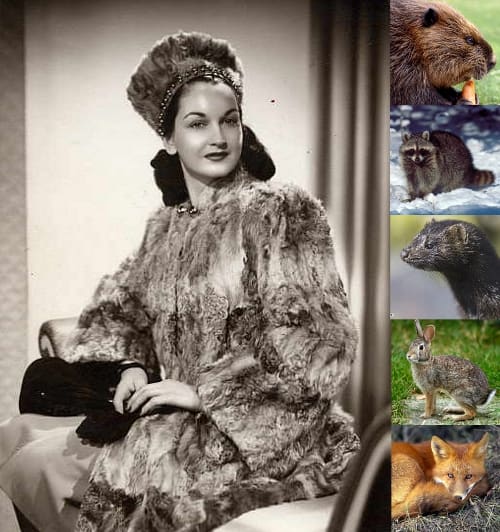
One of the season’s hottest modern trends is that of fur. We saw it all over the runways in a variety of styles, from Rachel Zoe vests to full-on fur coats, gloves, earmuffs, scarfs, and everything in between.
I consider myself nothing more or less than an animal on this earth. And as an animal, I feel it’s very important to respect the rights of all other brother & sister animals.
That’s why I want to start today’s post — which is an exploration and education on identifying 5 of the most common vintage furs used to create warm outerwear garments — with the declaration that I will never buy new fur or leather products. However, I will also declare that I will buy vintage fur or leather products as a sustainable option to use the resources which are pre-existing.
I believe that we each have a right to our own opinions, no matter the subject matter. I respect anyone’s similar or differing opinion and welcome further suggestions on how best to tackle this ethical fashion conundrum in the comments.
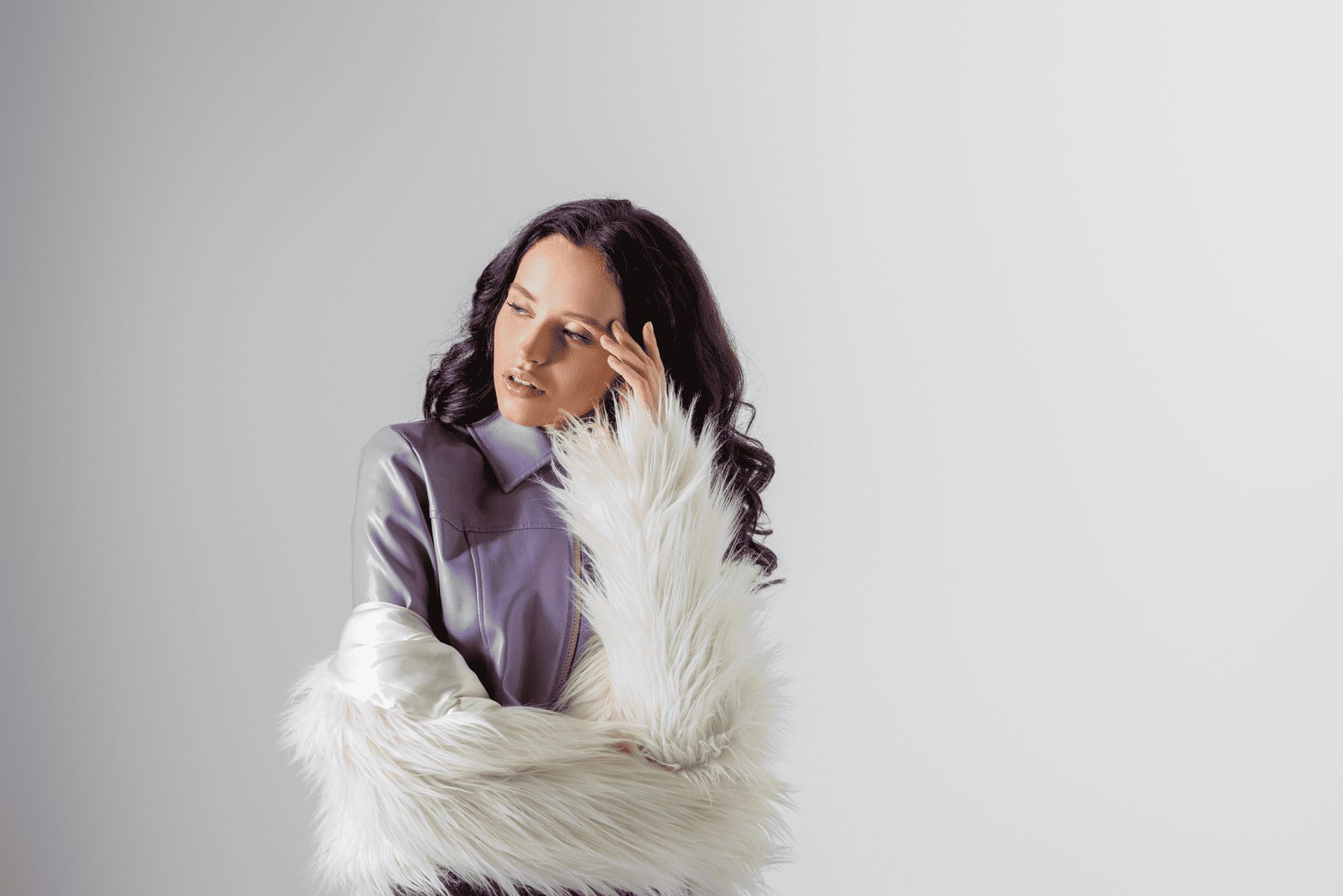
So, vintage lovers!
For the sake of today’s post, I hope that you leave with a greater understanding of vintage fur as a whole, which will fuel your OWN opinions and decisions on how to engage with these styles and trends this winter.
Keep reading after the jump to learn how to identify vintage mink, fox, rabbit, beaver & raccoon — and to understand just how the fur industry has influenced fashion from yesterday through today.
Winter Outerwear Fur Trend
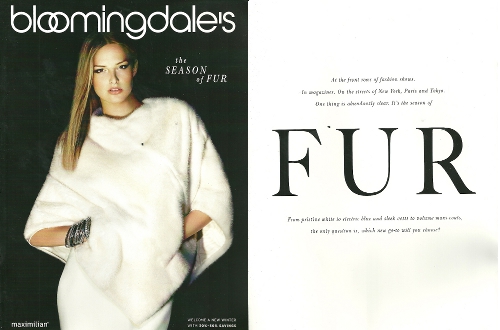
Before launching into identifying vintage furs, I must point out that fur is a big trend for winter. The runways set the stage for trends, and mainstream ready-to-wear designers take note.
The evidence of this cold weather season’s fur trend is apparent on the cover of Bloomingdale’s catalog cover above, which I received in my mailbox just yesterday.
Basic Fur Terminology
When we speak of fur, four keywords are used to describe how the fur piece is constructed.
UNDERCOAT
This is where you find the denser/thicker hair near the skin of the animal
GUARD HAIRS
These are the shinier, more delicate hairs that lay over the undercoat. They are more aesthetically pleasing, while the undercoat is the practical warmth layer.
PILE
The “pile” is used to describe the direction of the hair growth, i.e. “the pile grows inward from the tail or outward from the top of the belly to the bottom of the torso.”
PELT
The literal skin of the animal and the phrase used to describe the number of animals needed to create one fur garment. “This fur coat required 10 pelts of a fox,” for example.
OTHER RESOURCES
You can learn more about different types of fur and how to identify them by checking out the Vintage Fashion Guild Guide to Fur.
Fur Animals & Fur Production
The practice of utilizing animal fur for various purposes, such as clothing and accessories, emerged as a means of protection against harsh climates and a symbol of status and wealth.
Fur animals typically refer to specific species of animals bred or hunted for their fur. Fur production involves raising these animals in captivity or capturing them from the wild, primarily for their pelts.
In the following passages, we’ll dwelve into the six animals that are used for fur production.
1. Mink
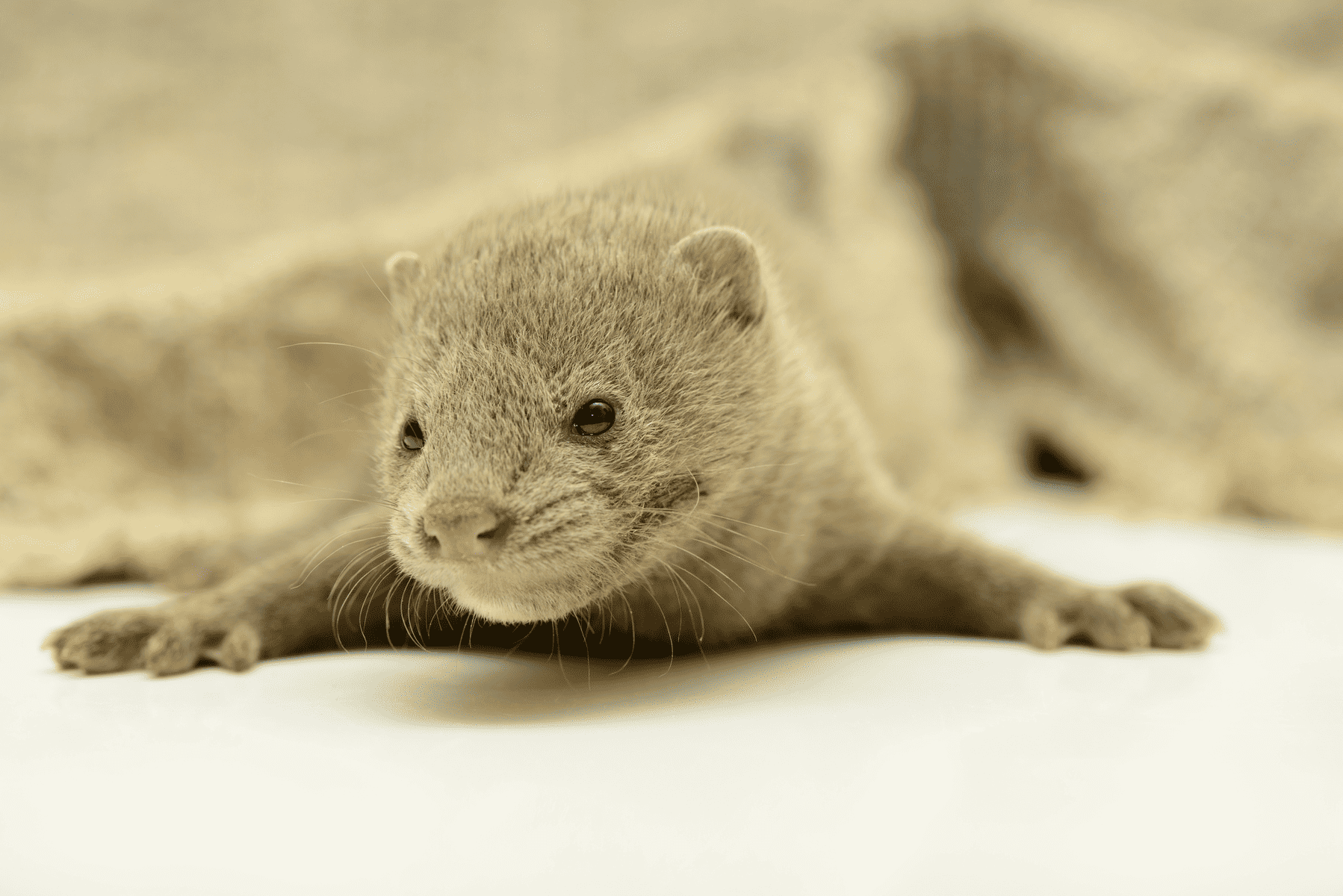
The Animal:
Wild or ranched mink, a type of weasel that can swim at free will (referred to as “semi-aquatic”) and is most commonly found in North America and countries of Siberia, China, and Japan.
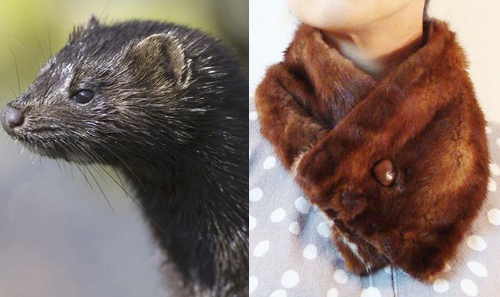
How To Identify:
Mink fur is flat and short, and because the animal itself is tiny (imagine no larger than a common squirrel), the pelts are long and narrow when construed together to form the garment.
The look of a mink piece is described as being almost “shiny and wet.” This makes sense since the animal can swim, so it’s almost as if the hair is like aquatic skin.
Fur is usually very light but still thick, and according to the Vintage Fashion Guild, dark mink is the most recognizable (see picture of wild mink above). Ranched mink are not born with dark fur coloring, so their fur is often dyed to different shades of brown and even white or a “silver blue” shade.

Popular Vintage Styles:
The definitive “mink coat.” While another animal fur is used for cold weather protective outer garments, the mink style is what I associate with Hollywood glamor and luxury.
The trend of mink began in the 20th century after mink was trapped for some time in large quantities. Beaver had been more popular previously, as you’ll learn why by reading how to identify vintage beaver furbelow.
It makes financial sense why mink is associated with such glitz & glam: Because the mink animal is so small, it requires dozens of them to make a coat or a stole. Thus the garment itself is more expensive than the same style made with a larger animal with larger pelts, like a fox.
Plus, mink fur is short and glossy, making mink the go-to animal for high-fashion pieces looking to radiate that luxurious shine.
- Natural Ranch Mink: The guard hairs should be uniformly silky, and the underfur should be compact and lighter in color, lending the fur a natural, lustrous sheen.
- Mutation Mink: This variant should also have silky, even guard hairs with a clear and uniform color. The cost is influenced by the availability and popularity of colors, and occasionally, natural ranch mink may be more expensive.
- Pieced Mink: Coats may be made entirely or partly from paws, gills, tails, or other mink pieces, often patterned for an even texture throughout. While attractive and more affordable, pieced mink coats may not wear as well as whole skin coats due to numerous seams, but should be reinforced at wear points for durability.
2. Fox
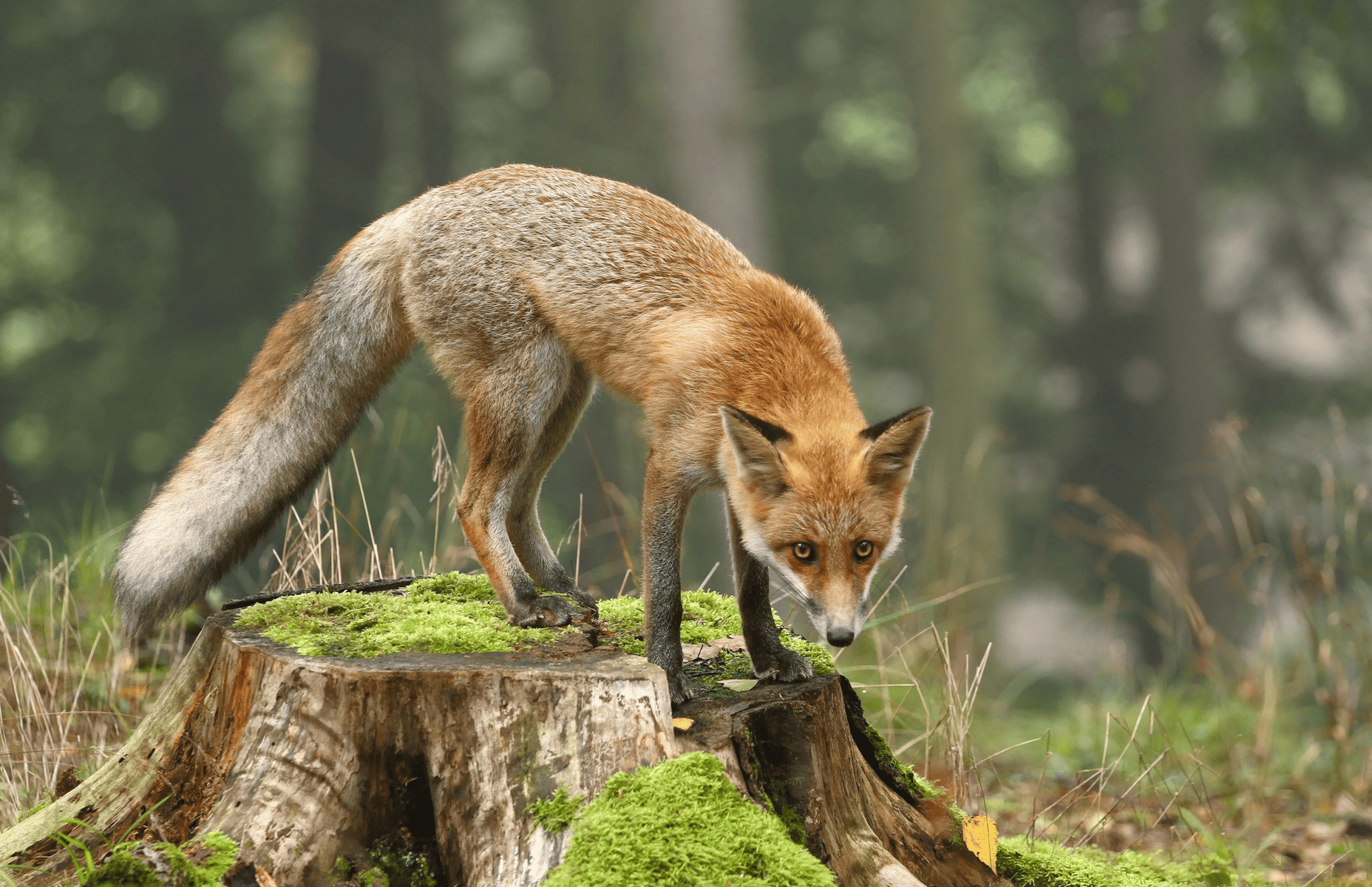
The Animal:
There are 12 species of what we know as the “fox,” the most recognizable of such being the red fox (shown above) or gray fox, which are the indigenous species of fox in North America.
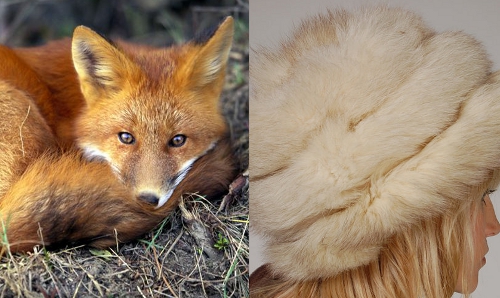
The US, Canada, and Finland are the world’s leaders in the production of fox fur, or essentially the creation of the “pelts” needed to make the garments as a whole.
Popular Vintage Styles:
Fox pelts complete with head and feet (see image below) were popular in the ’30s – ’50s.
Special note: While it is surely the creepiest, the easiest way to identify a type of fur is to take note of whether the garment contains the head or tail of its animal.
Mink stoles of the ’30s-’50s eras (on Etsy, seen sold often from the ’50s) were also often designed with heads and tails still intact, which I assume became trendy because it was much easier to use the entire animal versus just looping together smaller pelts.
I’d love to know why using animal heads/tails to design a fur garment because less popular after the ’50s. To my knowledge, PETA was founded as an organization in 1980, so there is less chance that this organization had influence of fur trends & styles prior to that.
I also noticed — along with rabbit & beaver — that fox fur is a popular choice for hats, shown in the picture farther above. The hat above is fur from a white fox. I believe that because there are so many “natural color choices” of foxes, dying fox fur is not as popular as dying mink fur.
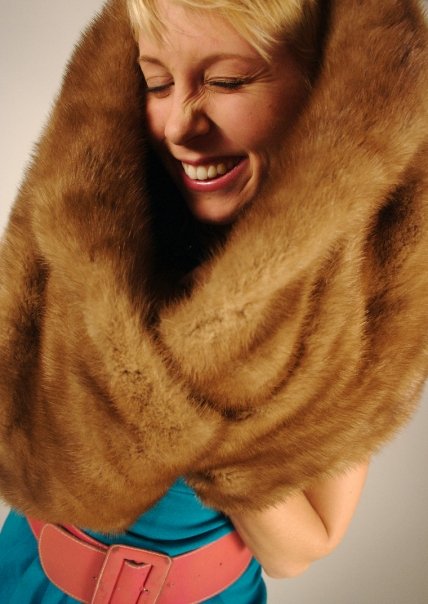
How To Identify:
When you’re examining a piece sans head or feet, identifying whether the fur is a fox or not depends mostly on touch.
The fur is much longer in comparison to other woodland creatures. It’s a soft fur that comes in a variety of colors depending on the type of fox species:
- Blue Fox: Mostly ranched in Scandinavia, the color varies from blue-brown to pure blue and even white with blue highlights.
- Cross Fox: Named for the unique cross-like marking on the head and neck, these foxes typically display red fur with yellow tints, deepening in color at the cross, which blends red with black. Some are silver-colored, known as silver cross foxes.
- Gray Fox: Mostly American, the finest pelts originate from the northern states. The fur is silver-gray with a faint red tinge.
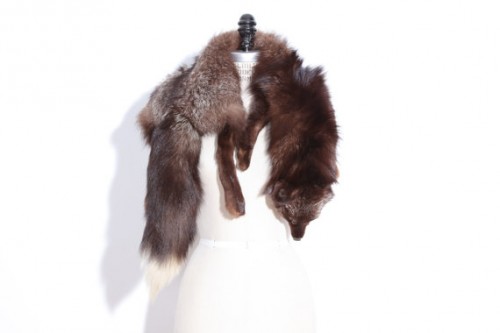
- Kitt Fox or Corsac: North American Kitt foxes are gray foxes, while Corsac foxes come from Siberia and former Soviet regions. Corsac fur is shorter and softer, with sparse yellow guard hairs tipped white, but is less durable compared to other fox types.
- Platina Fox: Originating from Norway, this fur is a lighter platinum color than a silver fox, sometimes slightly bleached for enhancing whiteness.
- Red Fox: Native to every continent except South America, the best red fox has deep fur with a silky, robust texture, generally sourced from northern climates.
- Silver Fox: Exclusively ranched, the fur is blue-black with a white tail tip. The finest silver fox is a pure silver color with a black stripe.
White Fox: Known for its thick underfur and slight blue shade along the pelt’s back. It might require bleaching to prevent yellowing. Though less durable than common fox types, it embodies the epitome of glamour.
3. Rabbit
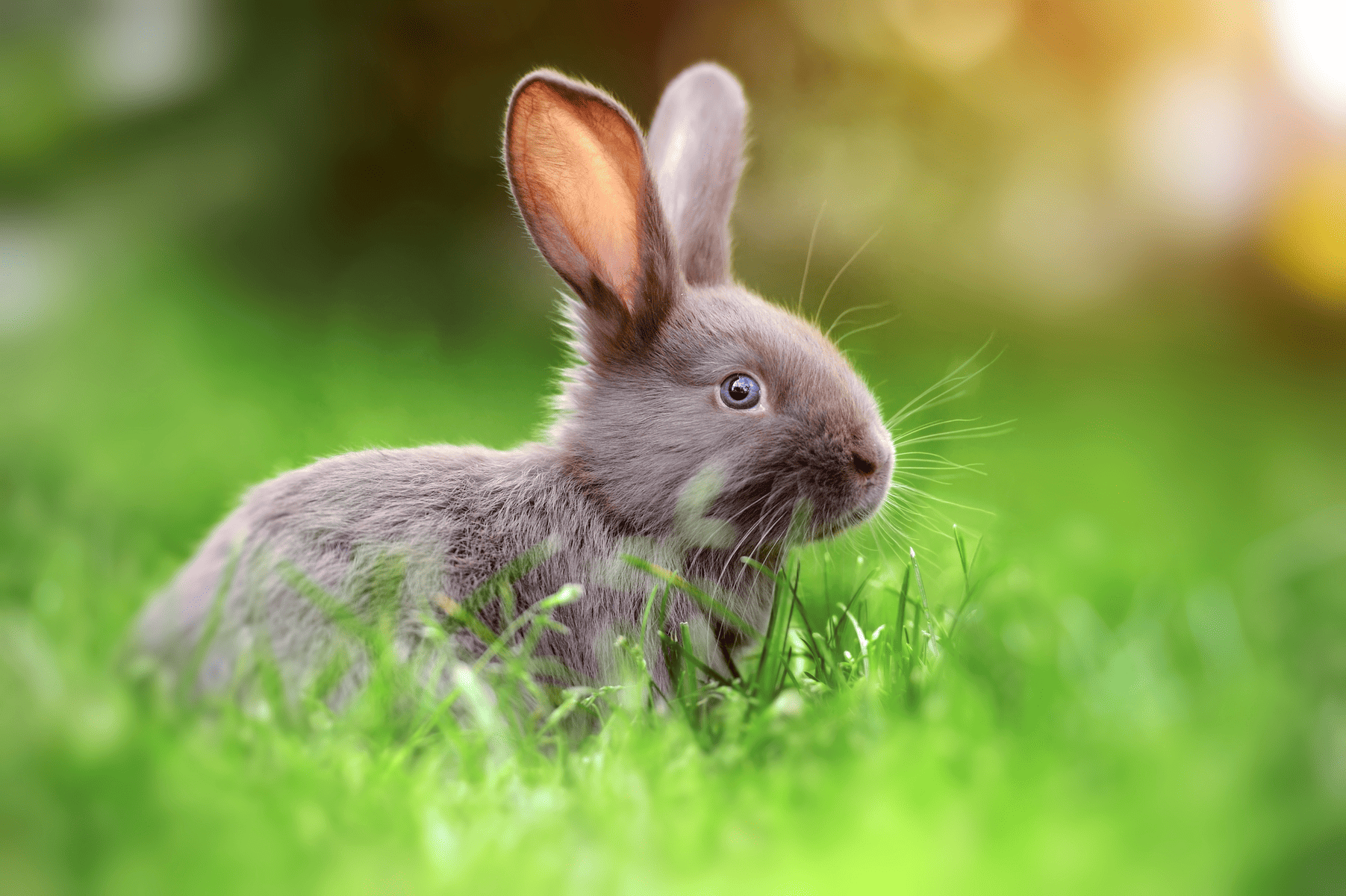
The Animal:
The rabbit is technically a “rodent” animal that is quite literally found all over the world in a variety of species, sizes, color,s and personalities.
Popular Vintage Styles:
Rabbits are so plentiful and common that many rabbit pieces are less expensive than, say, a mink or a beaver piece.
According to the Vintage Fashion Guild, rabbit furs were more often dyed prior to the 1970s. Because rabbits are one of the least expensive fur garments, the trend was to dye the rabbit fur to resemble a more expensive creature. Perhaps this is why with vintage furs, we so often see a rabbit piece dyed dark brown as if it were mink, beaver, or fox.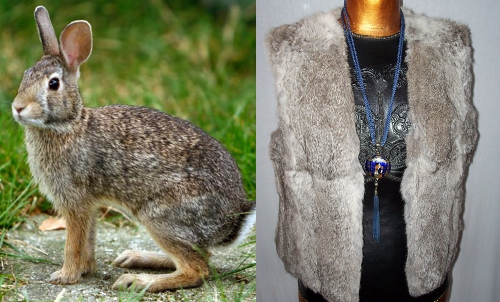
How To Identify:
When petting a garment made from rabbit, it should feel like you are petting a domestic cat. Because the coloring of a rabbit garment could be just about anything — from white to black and any shade in between, thanks to the popularity of dying rabbit fur — it’s most important to take note of the garment’s longer, denser hairs that are silky soft. You’ll want to rub the garment on your face, much like a cat would rub its body on you when wanting to be stroked!
Beginning in the 1970s — when love and acceptance of all things “natural” began thanks to the peace, love & flower power generation — the natural colors of rabbit fur were embraced as a trend, and less dying occurred.
Also, the demand for “higher quality fur” had lessened. Mink was the luxurious go-to fur of its day, given the cost of mink fur coats, so rabbit fur was dyed previously to the ’70s to resemble mink fur.
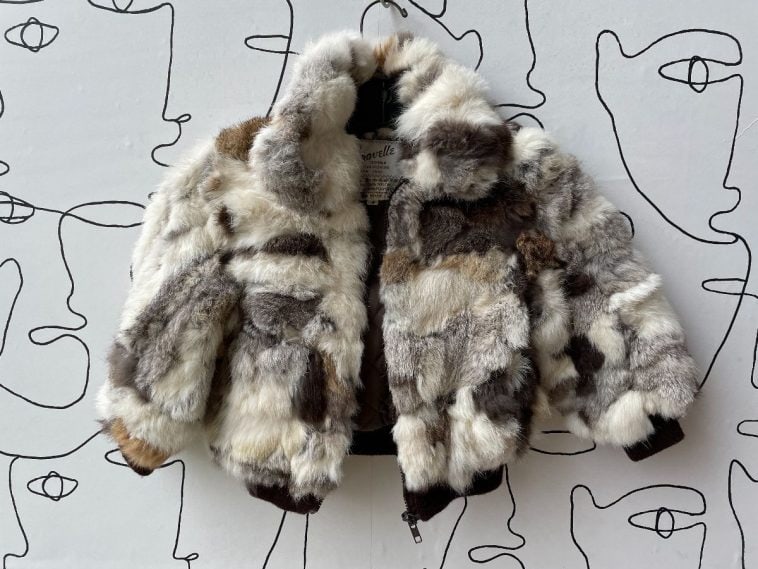
The rabbit vest you see pictured above is from the ’70s and not dyed. This grey-white coloring is very unique to the common species of North American rabbit, so it’s easier to identify more modern rabbit pieces based on color alone.
Angora is another style of rabbit fur with recent popularity made from the sheared fur of the angora species of rabbit, shown below.
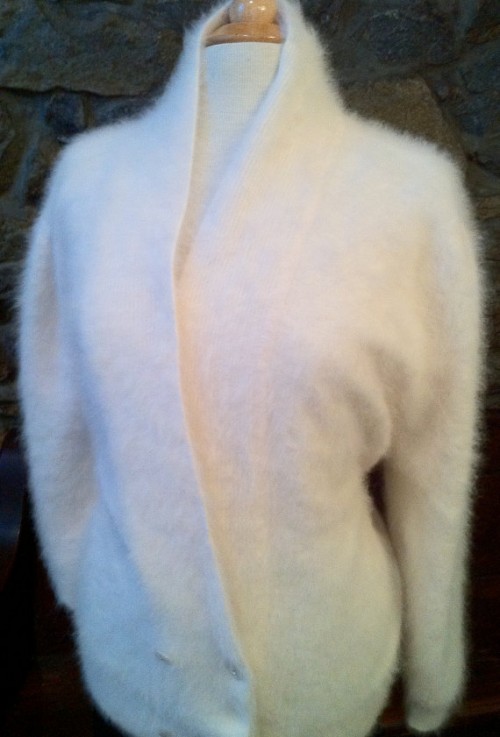
We’ve all loved our “cashmere” sweaters, which are soft to the touch and made from wool. Angora is a similar touch and feel to cashmere, but you’ll know it’s angora because you’ll notice small threads of fur emerging from the garment material that can almost be “brushed” like fluffy, not-thick hair.
4. Beaver
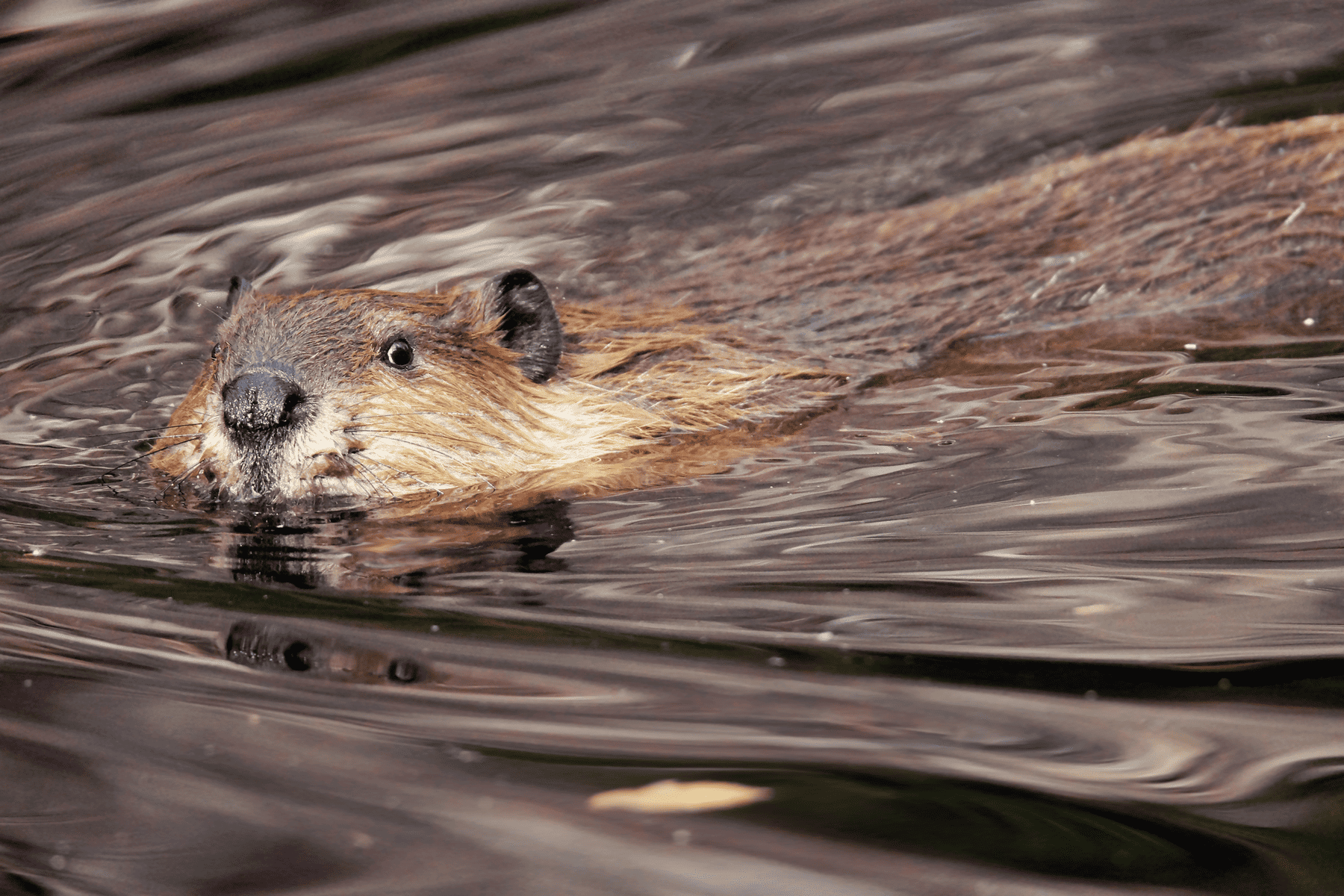
The Animal:
Two types of beavers exist, the Eurasian beaver in Europe and the North American beaver in Canada, the US, and Northern Mexico. The Eurasian beaver was hunted to extinction in the 17th century and is now being reintroduced. In North America, beaver trapping boomed in the 1600s to mid-1800s, decimating the population, and prompting the French and British to establish the fur trade in North America.
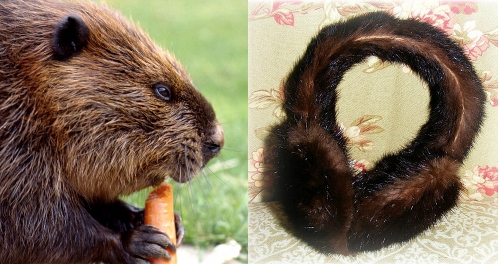
Popular Vintage Styles:
Beaver “wool felt” hats were symbols of prestige from the 1600s – 1800s. The hat’s style evolved over centuries, but men wore them for every occasion. The 20th century saw the popularity of beaver fur in outerwear accessories like scarves, earmuffs, and hats.
- Natural Beaver: This variant is significantly different from the familiar sheared beaver. Its long guard hairs lend it a lustrous sheen. Ideal for men’s coats due to its rugged appearance, natural beaver is also perfect for casual wear for both men and women. As a durable fur, natural beaver often comes in its natural brown color but can also be dyed in different hues.
- Sheared Beaver: Traditionally, beaver fur has been plucked and sheared to a velvety, soft pile. Its natural color may be dyed darker brown, beige, or even bleached white. However, it needs to be handled with care as the fur can mat when wet and requires annual cleaning. If you want to know how to clean fur, I got you!.
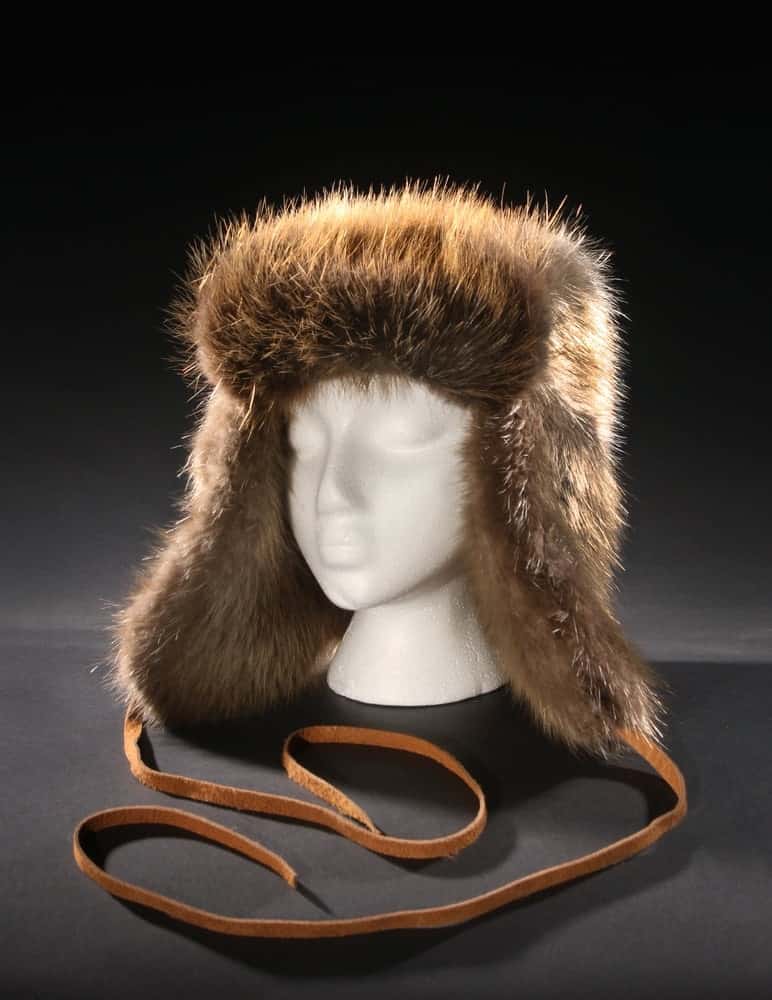
(Brief) Beaver Trading History:
Beaver fur was versatile, used in blankets, bags, coats, and even as currency value during the 16th and 17th centuries. “Beaver fur wars” ensued in the 1600s as Europeans and Iroquois Indians contested for lands rich in beavers.
The fur trade thrived until the 1840s, when hat styles changed, and beavers’ dwindling numbers threatened the industry.
How To Identify:
This fur was coveted for its durability, warmth, and density, making it ideal for winter conditions. Garments made from beaver fur, like earmuffs, exhibit an almost bear-like fur texture and have a durable quality. Beaver wool felt was a favored material for hatters for its resilience and water resistance. Consequently, antique beaver garments might be easier to find due to their enduring nature.
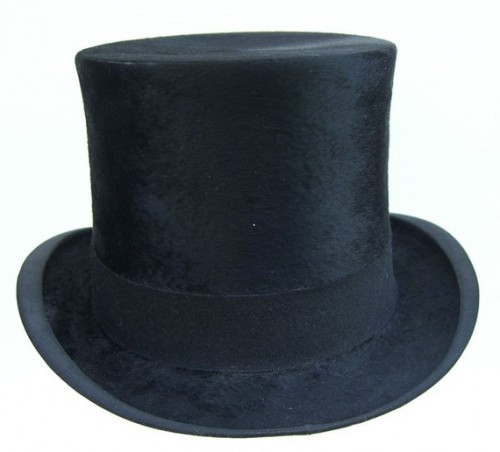
5. Raccoon
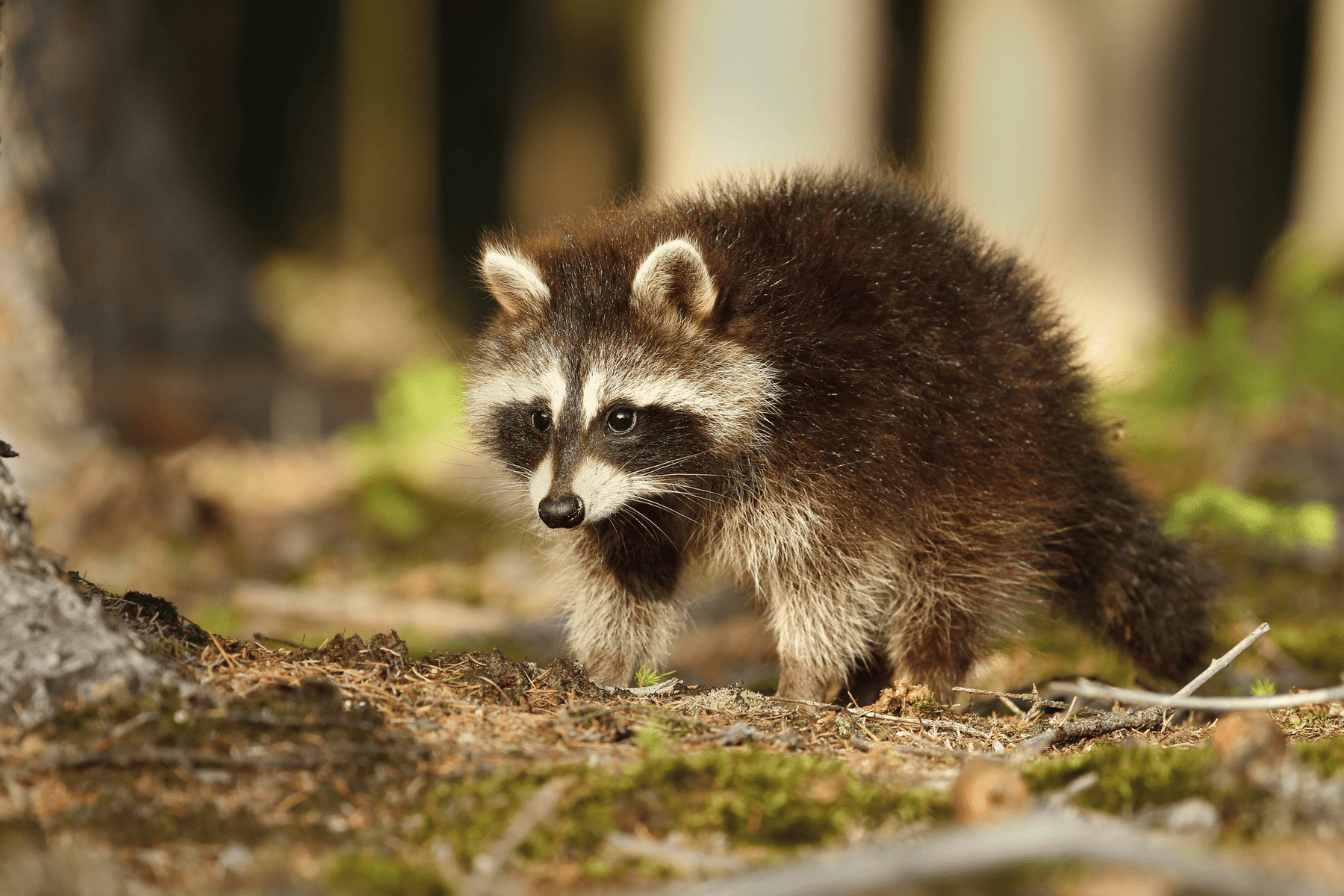
The Animal:
Raccoon, a uniquely American animal, and fur, has significantly evolved from the hefty coats synonymous with 1920s college men and the Davy Crockett hats of the 1950s. Raccoons inhabit all across the United States and southern Canada. Raccoon is made up of approximately 90% undercoat. Their fur becomes denser and longer (hence warmest) the further north they reside.
According to hunting stats kept on record, raccoon trapping for outdoor garment use reached an all time high in the ’70s when 5.2 million raccoons were caught in the hunting season of 1976-1977.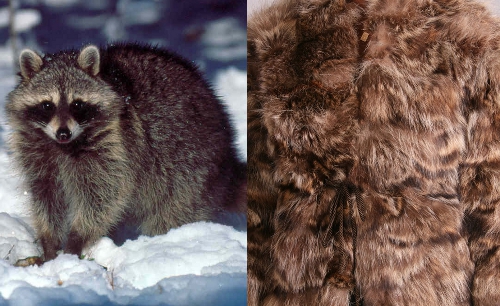
The reason for such hunting popularity of the ‘coon is most likely due to the fact that other animals used for warm outerwear — (cough cough) beaver — were still struggling to regain population after being over hunted for literally hundreds of years.
Popular Vintage Styles:
If a raccoon is plucked and sheared, it should exhibit a silky texture and uniform shearing. Sheared raccoon, like any sheared coat, demands special care to prevent matting. Raccoon fur can also be bleached or dyed. When taken care of, it’s very durable fur and is testified by the persistence of 1920s raccoon coats even today.
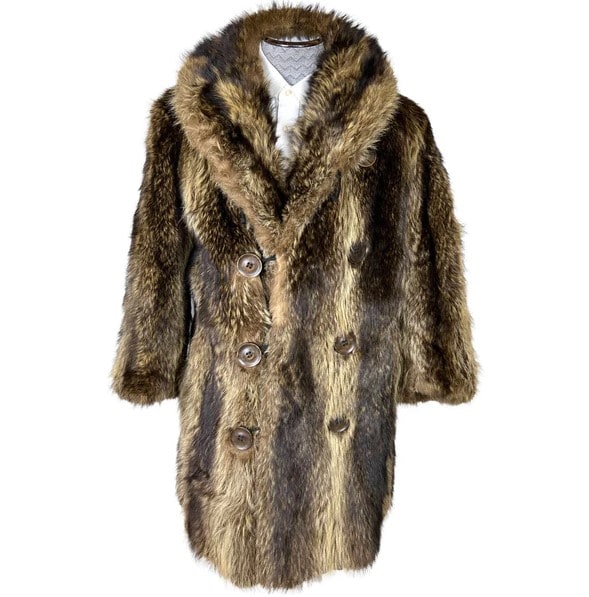
Raccoon was also popular in the ’20s & ’30s before the trend of “long haired fur” became less popular in the ’40s-’50s when the short haired mink reigned supreme & most stylish.
An interesting vintage trend to note is that when Walt Disney released the movie “Davy Crockett: King of the Wild Frontier” in the ’50s that raccoon hats — complete with tails and all — became popular.
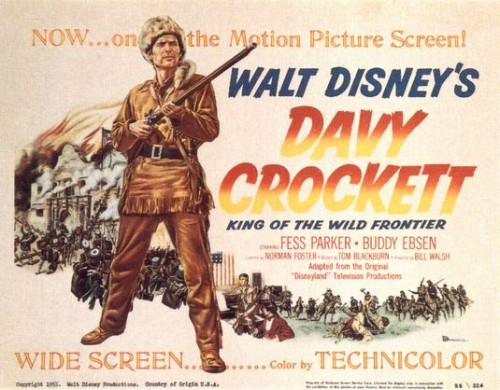
The raccoon’s signature tail alternates between black and tan rings, but its bodyguard hairs are long, silvery with black tips, with the gray sides shading to black along the mid-back. The finest raccoon fur boasts abundant guard hair, thick underfur, and a silvery hue. It’s noteworthy that raccoon pairs have been relocated to Russian forests where their population is reportedly expanding, potentially challenging its exclusive American identity.
How To Identify:
When identifying raccoon fur, look for the characteristic long, silvery bodyguard hairs with black tips, the gray sides blending into black along the back’s center, and the distinctive tail with black and tan rings.
Quality raccoon fur will have an abundance of guard hair, heavy underfur, and a silvery shade. Whether the raccoon fur is plucked and sheared, look for a silky texture and even shearing. Always remember, the further north the raccoon resides, the denser and longer the fur will be.
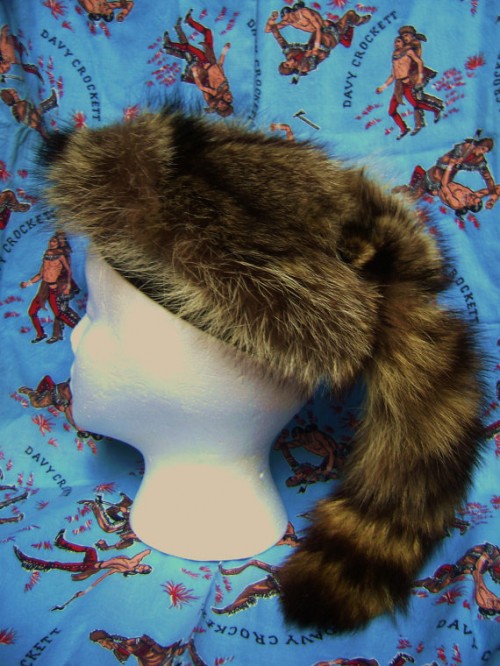
6. Chinchilla
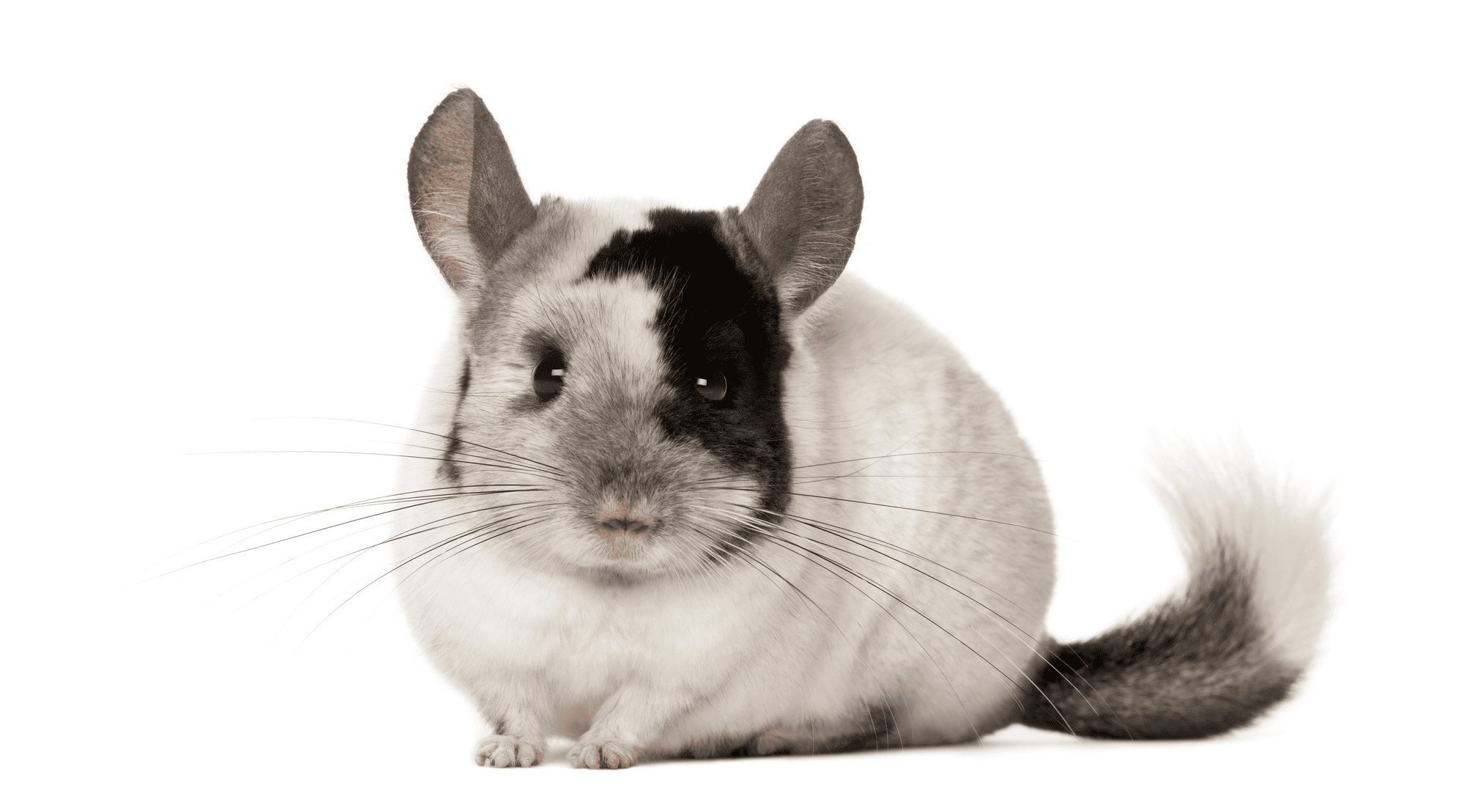
The Animal:
Originating from the lofty Andes of South America, the Chinchilla is a rodent whose name is attributed to the “Chincha” people, South American natives who utilized the hair for clothing – a practice followed by the conquering Incas and the early Spaniards who overpowered the Incas.
The fur, characterized by its blue-gray hue and exceptional softness, was so coveted in Europe that Chinchillas were on the brink of extinction by 1914. Today, all Chinchillas are ranch-raised, thanks to a few breeding pairs imported to the US in 1924.
Popular Vintage Styles:
Renowned for its ultra-soft, silky, and dense fur, Chinchilla holds the record for the highest hair density among animals, with over 20,000 hairs per square centimeter. This extreme density prevents parasites such as fleas from infesting Chinchillas, as they would suffocate.
Unlike humans, who sprout a single hair from each follicle, a Chinchilla boasts over 50. The top hair displays a silvery-gray color, contrasting the dark underfur. The most desirable Chinchilla exhibits a slate-blue color, often augmented by brighteners, though mutation colors have also emerged.
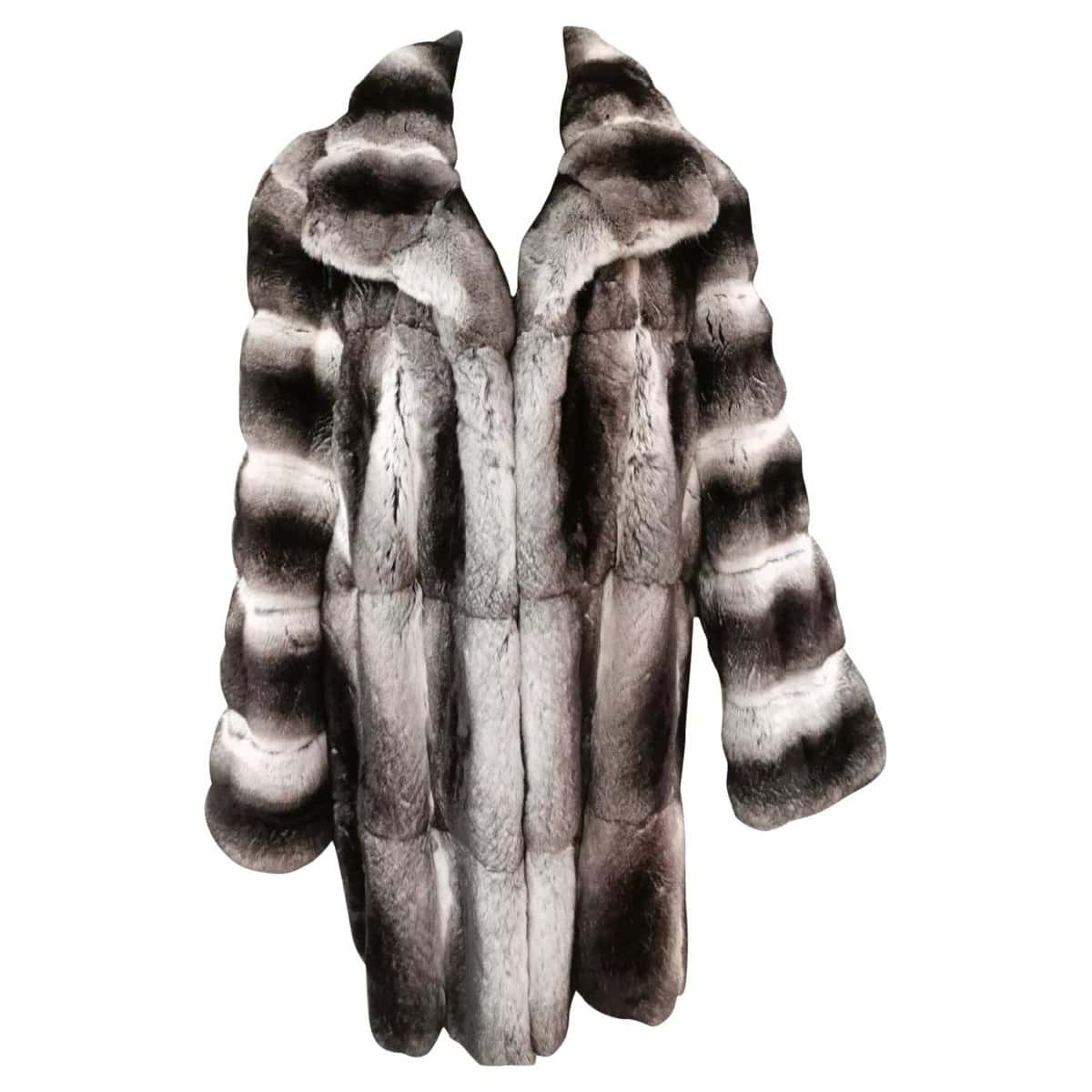
How To Identify:
Historically, the small size and delicate nature of Chinchilla skin made it challenging to work with and thus highly expensive. While still costly, advancements in dressing methods have eased its handling and enhanced its wearability. However, no fur demands more care than Chinchilla fur.
Despite its lightweight, this fur offers significant warmth. To identify a Chinchilla fur, look for its signature silky, dense fur in a silvery-gray color, contrasted by a dark underfur. The premium quality chinchilla fur will exhibit a slate-blue hue.
Summing Up
So far, you’ve gained valuable insights into identifying fur products – or inherited fur coat – and understanding the ethical concerns surrounding fur production.
As consumers, being informed about the sources of luxury items empowers us to make conscientious choices that align with our values and contribute to more responsible and compassionate fashion practices. Identifying different fur products can help you better master the matching skills. Of course, if you want your matching to be more sophisticated, you may consider using Custom Pins as your fashion item. No matter what style you want, custom pins can meet your needs.

I love this!! So much good info! At this moment I am writing an email with pictures to a local Furrier for possible pricing! I have 5 furs w/ different history’s. What’s a girl to do? Help me!!!
I have a man’s full length Racoon size 46 (Big and Tall) Dark Brown Long hair silver gray. The coat was bought at Dittrich’s Furs West Bloomfield MI. My husband passed a way and I have the coat in storage since then. It is in good condition. He bought the coat because he liked the way The Fonzie looked in the show HAPPY DAYS. I have the apprasial papers. Do u know any co-signment shops I can sell it ay?
I’m a chicken rescuer who doesn’t feel at all bad about owning the pelt of an animal that preys relentlessly on chickrns (and other birds.) I have here a stole that is such a neutral brown, it is almost gray. It seems to be comprised of pelts that are about 3 inches by <18 inches. There is a darker (soft) stripe down the middle of each pelt. Very old (1930s? 1940's?) with a tag, Margaret Roehler Furs. Any idea what I am looking at? I will take pictures tomorrow.
Did you get an answer. I have the same question
Mink stole!
Mink Stole! Very popular in the 1950’s and 1960’s.
I have a mink stole that is a long rectangle in shape with pockets for hands to slide into. About a third do the way off of each end, there is a straight row with alternating little animal feet and long smooth tails attached with some type of crochet type thing in the end of the tails where attached. It is lined, though not silky lining. I can’t find one that has feet and tails sewn onto it like this one. Help …….please
Small biology note: rabbits are NOT rodents but beavers are.
I have 2 fur jackets
First one was my grandmother’s and is around 50 years old
The other one is fur and leather
Wondering if anyone know of any legit people that could appraise them so I can sell them
Good day i have inherited two fur items from my grandmother i would like to find out more about them if they is anyone that could assist me or refer me to someone that can kimd regards
Sammy I just love your site! Thank you for the plethora of wisdom and info~
Do you have an email where I could send some pics of my great grandmothers fur coats and hats? I am liquidating them & want to make sure to grace them with honors they so deserved!
Thank you,
Kelly
I am also selling one of my great grandmothers coats. I am trying to figure out what type of fur it is. I’m fairly certain it’s mink.
Would love some thoughts from you on what you think, if I can email you pictures.
I uncovered my grandmothers stole.. 4 complete pelts that I believe are mink. They are long and slender but not too large. I would love to verify the pelt for certain. What do you suggest?
I am trying to identify my great aunt’s fur coat. It is very well made, and even has my aunt’s name embroidered in the coat lining. However, there are no designer labels anywhere! 🤔 It is very heavy and has a leather bely. It is in excellent condition, considering she never had it in cold storage. She said she paid alot of money for it. It is full length with leather buttons. Dark brown. It is soft, but not soft when brushed in opposite direction. I can send a picture. I would say she purchased it about 1970. Any assistance would be great.
Very helpful and informative, thanks. One typo I noticed, apropos racoons, “…infected with rabbis..” particularly amused my Jewish friends, who understand the problem!
Hi Sammy,
Thanks very much for a very informative explanation on this confusing matter of fur. I bought some fur items recently at auction and thanks to your post, I have a rough idea of what types of fur they are, but I am however wondering if you would be kind enough to help me better identify them. I can post photos by email, maybe?
Hello Sammy,
Thank you for your very useful information! I am wondering if you have any advice on re-styling old fur coats without the expense of a professional furrier? I am perticularly interested in weather a fur desinged for a woman can be re-designed for a man, can a zipper be sewn into a jacket, and is it possible to sew a hood onto a jacket.
Thank you again!!!
Hello how can I tell what Era my mink scarf is from?
I have a stole, cape and jacket in fur think Mink? How can I sell it?
This is a very nice article with good information. There are many good vintage coats and jackets to be found at various places including eBay and Shopgoodwill. I have found a vintage 1920’s men’s racoon on Shopgoodwill that was under $50 as well as a great Beaver coat. I agree that these are worthwhile garments to be preserved and used in place to prevent the sacrifice of new animals. Good job.
i was interested looking at your info i have a couple of vintage minks a fox and have just got hold of a fur that i cannot recognise i wonder if there’s any chance you might know what these two furs are if i could send u a pic ?? hoping to hear from you xwendy
I have a coat and no idea what kind of fur. Where can I attach a picture?
Mahalo
Couldnt tell if the information was helpful because it was horrific to read.
Rabbits are not rodents, actually. They belong to the “Lagomorph” order.
This was a very helpful article! Thank you!
I have what I believe is Oscelot…long…..and 2 minks. One white one black..black on is long ..one came from Speiser fur in Vancouver… other two custom made. What do I do with them. They were my moms who has passed
I have a question:
I am new to my area and just brought my 3/4 sheared mink in for storage. I bought it at a reputable establishment for about $5K.
The new place told me it was Chinese mink. Not really mink. That I was taken.
Do I believe him?
I have a vintage fur collar from a deceased relative circa early 1950’s. Believe it’s mink judging by long dark brown coating & heads/tails are intact. Collar consists of four pelts. How can I find out its worth & a reputable buyer?